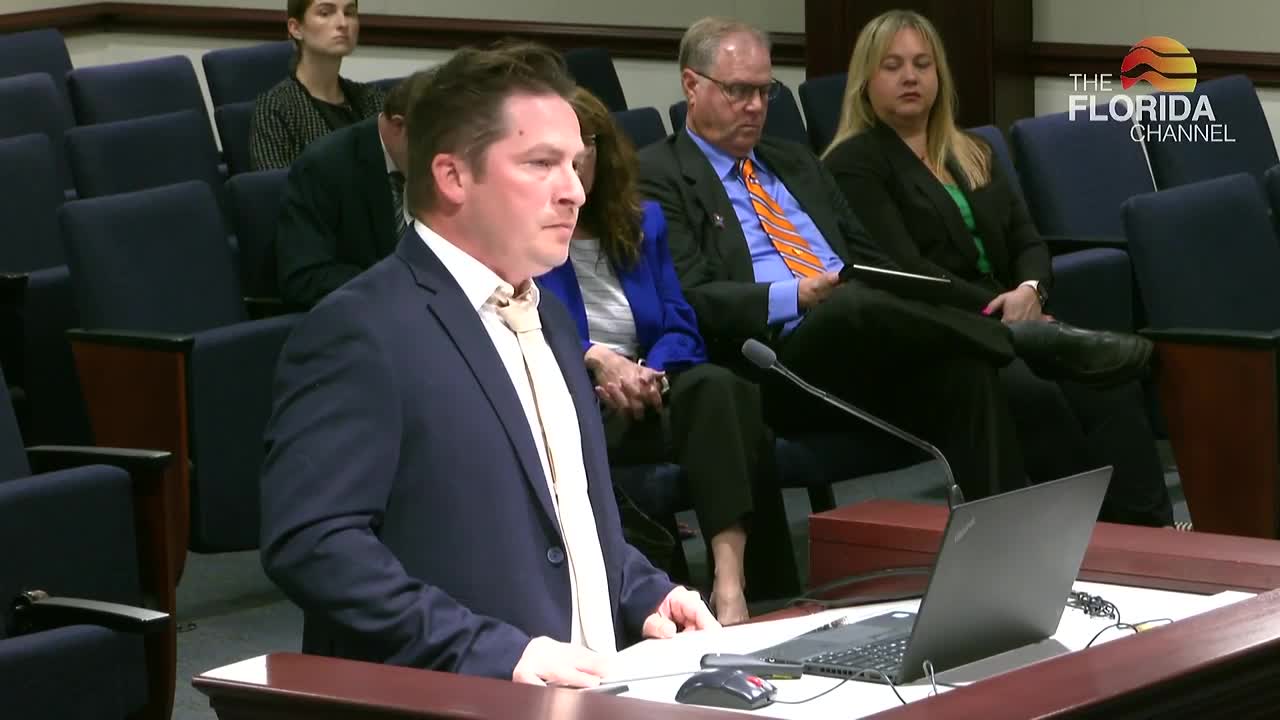Florida oyster farmers thrive with year-round harvests in pristine waters
February 11, 2025 | Agriculture , Standing Committees, Senate, Legislative, Florida
This article was created by AI summarizing key points discussed. AI makes mistakes, so for full details and context, please refer to the video of the full meeting. Please report any errors so we can fix them. Report an error »

In a recent meeting of the Florida State Legislature's Committee on Agriculture, the spotlight turned to the thriving aquaculture industry, particularly oyster farming, which is gaining momentum along the Gulf Coast. As discussions unfolded, the committee members were captivated by the potential of Florida's waters to produce high-quality oysters year-round.
Senator Burton initiated the conversation by inquiring about the number of oyster farms in Florida. While the exact count was uncertain, it was noted that over a hundred farms existed during Hurricane Michael, with the current number likely higher. The focus then shifted to the unique advantages of Florida's oyster farming, particularly the cultivation of triploid oysters—akin to seedless watermelons—which grow faster and are free from reproductive material, allowing for year-round harvesting.
The pristine waters of the Saint Mark's National Wildlife Refuge were highlighted as a key factor in the exceptional taste of these oysters. Farmers shared their pride in producing oysters that have gained recognition in prestigious culinary circles, with several being served at Michelin-starred restaurants. Notably, one farmer recently sent 4,000 oysters to the Super Bowl, showcasing the demand for Florida's seafood.
The meeting underscored the environmental benefits of oyster farming, as these mollusks naturally filter water, consuming unwanted nitrogen and phytoplankton, thus improving water quality. The committee expressed appreciation for the updates on aquaculture programs, recognizing the significant role they play in both the economy and the ecosystem of Florida's Gulf Coast.
As the meeting concluded, it was clear that the future of oyster farming in Florida is not only promising but also vital for sustainable practices and culinary excellence. The discussions left attendees with a sense of optimism about the growth and impact of aquaculture in the state.
Senator Burton initiated the conversation by inquiring about the number of oyster farms in Florida. While the exact count was uncertain, it was noted that over a hundred farms existed during Hurricane Michael, with the current number likely higher. The focus then shifted to the unique advantages of Florida's oyster farming, particularly the cultivation of triploid oysters—akin to seedless watermelons—which grow faster and are free from reproductive material, allowing for year-round harvesting.
The pristine waters of the Saint Mark's National Wildlife Refuge were highlighted as a key factor in the exceptional taste of these oysters. Farmers shared their pride in producing oysters that have gained recognition in prestigious culinary circles, with several being served at Michelin-starred restaurants. Notably, one farmer recently sent 4,000 oysters to the Super Bowl, showcasing the demand for Florida's seafood.
The meeting underscored the environmental benefits of oyster farming, as these mollusks naturally filter water, consuming unwanted nitrogen and phytoplankton, thus improving water quality. The committee expressed appreciation for the updates on aquaculture programs, recognizing the significant role they play in both the economy and the ecosystem of Florida's Gulf Coast.
As the meeting concluded, it was clear that the future of oyster farming in Florida is not only promising but also vital for sustainable practices and culinary excellence. The discussions left attendees with a sense of optimism about the growth and impact of aquaculture in the state.
View full meeting
This article is based on a recent meeting—watch the full video and explore the complete transcript for deeper insights into the discussion.
View full meeting